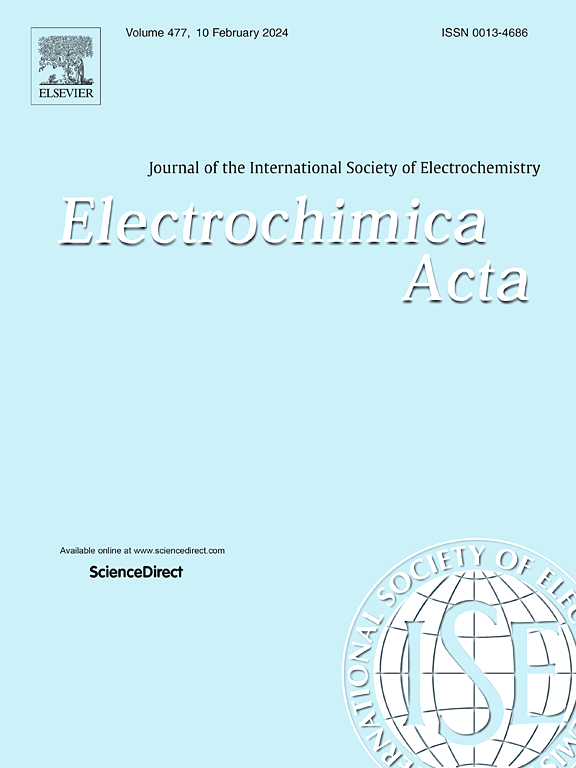溶剂化和阴极表面吸附竞争对锂氧电池动力学的影响:基于纳米阵列电极的模型研究
IF 5.5
3区 材料科学
Q1 ELECTROCHEMISTRY
引用次数: 0
摘要
电解质溶剂的供体数(DN)是决定LiO2中间溶剂化和锂氧电池(LOB)动力学的关键因素。在低dn溶剂中,LiO2倾向于吸附在阴极表面并通过表面介导还原为Li2O2,而在高dn溶剂中,LiO2优先被溶剂化并随后歧化为Li2O2。然而,之前的研究忽略了一个关键问题:阴极表面是否能对LiO2提供足够强的吸附,特别是在低dn溶剂中。为此,本研究提出MnO2、NiO和Co3O4纳米阵列模型与碳纳米管一起,同时研究不同阴极对LiO2的吸附以及在一致阴极结构下的溶剂DN效应。实验和理论分析表明,氧阴极的放电涉及到LiO2中间体的溶剂化和它们在阴极上的吸附之间的竞争。当氧阴极对LiO2具有较强的吸附作用时,吸附和溶剂化相互竞争,导致在高dn溶剂中形成溶液机制,在低dn溶剂中形成表面机制。相反,如果氧阴极对LiO2的吸附较弱,则主要发生溶液机制,无论在高dn还是低dn溶剂中。因此,在评价溶剂对LOB动力学的影响时,必须充分考虑正极材料的吸附能力。本文章由计算机程序翻译,如有差异,请以英文原文为准。


The effect of competition between solvation and cathode surface adsorption on the kinetics of lithium−oxygen batteries: A model study based on nanoarray electrodes
The donor number (DN) of electrolyte solvents was reported to be the key factor determining LiO2 intermediate solvation and lithium−oxygen battery (LOB) kinetics. In low-DN solvents, LiO2 tends to adsorb onto cathode surfaces and undergoes surface-mediated reduction to Li2O2, while in high-DN solvents, LiO2 is preferentially solvated and subsequently disproportionates to Li2O2. However, prior studies overlooked a critical issue: whether cathode surfaces can provide sufficiently strong adsorption for LiO2, particularly in low-DN solvents. Herein, this study proposes MnO2, NiO, and Co3O4 nanoarray models alongside carbon nanotubes to simultaneously investigate LiO2 adsorption on different cathodes and solvent DN effects under consistent cathode architectures. Experimental and theoretical analyses reveal that the discharge of oxygen cathodes involves a competition between the solvation of LiO2 intermediates and their adsorption on cathodes. When an oxygen cathode has strong adsorption of LiO2, the adsorption and solvation compete with each other, leading to a solution mechanism in high-DN solvents and a surface mechanism in low-DN solvents. Conversely, if an oxygen cathode shows weak adsorption of LiO2, a solution mechanism predominately occurs, regardless of whether in high- or low-DN solvents. Thus, when evaluating solvent effects on LOB kinetics, the adsorption capacity of cathode materials must be fully considered.
求助全文
通过发布文献求助,成功后即可免费获取论文全文。
去求助
来源期刊

Electrochimica Acta
工程技术-电化学
CiteScore
11.30
自引率
6.10%
发文量
1634
审稿时长
41 days
期刊介绍:
Electrochimica Acta is an international journal. It is intended for the publication of both original work and reviews in the field of electrochemistry. Electrochemistry should be interpreted to mean any of the research fields covered by the Divisions of the International Society of Electrochemistry listed below, as well as emerging scientific domains covered by ISE New Topics Committee.
 求助内容:
求助内容: 应助结果提醒方式:
应助结果提醒方式:


